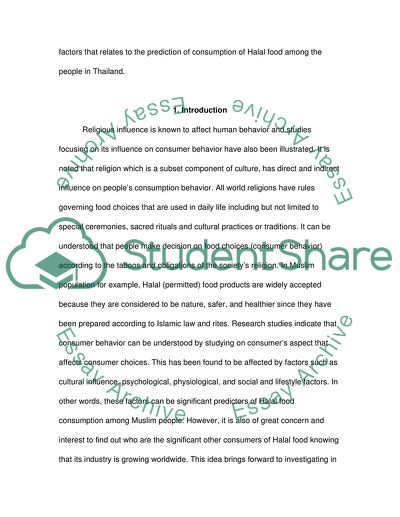Cite this document
(“Halal Food Consumption in Thailand Essay Example | Topics and Well Written Essays - 4250 words”, n.d.)
Halal Food Consumption in Thailand Essay Example | Topics and Well Written Essays - 4250 words. Retrieved from https://studentshare.org/religion-and-theology/1562289-consumer-behavior-halal-foodsin-thailandhavent-name-it-yet
Halal Food Consumption in Thailand Essay Example | Topics and Well Written Essays - 4250 words. Retrieved from https://studentshare.org/religion-and-theology/1562289-consumer-behavior-halal-foodsin-thailandhavent-name-it-yet
(Halal Food Consumption in Thailand Essay Example | Topics and Well Written Essays - 4250 Words)
Halal Food Consumption in Thailand Essay Example | Topics and Well Written Essays - 4250 Words. https://studentshare.org/religion-and-theology/1562289-consumer-behavior-halal-foodsin-thailandhavent-name-it-yet.
Halal Food Consumption in Thailand Essay Example | Topics and Well Written Essays - 4250 Words. https://studentshare.org/religion-and-theology/1562289-consumer-behavior-halal-foodsin-thailandhavent-name-it-yet.
“Halal Food Consumption in Thailand Essay Example | Topics and Well Written Essays - 4250 Words”, n.d. https://studentshare.org/religion-and-theology/1562289-consumer-behavior-halal-foodsin-thailandhavent-name-it-yet.


